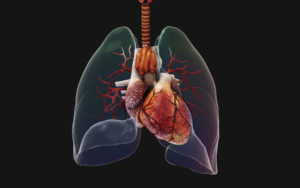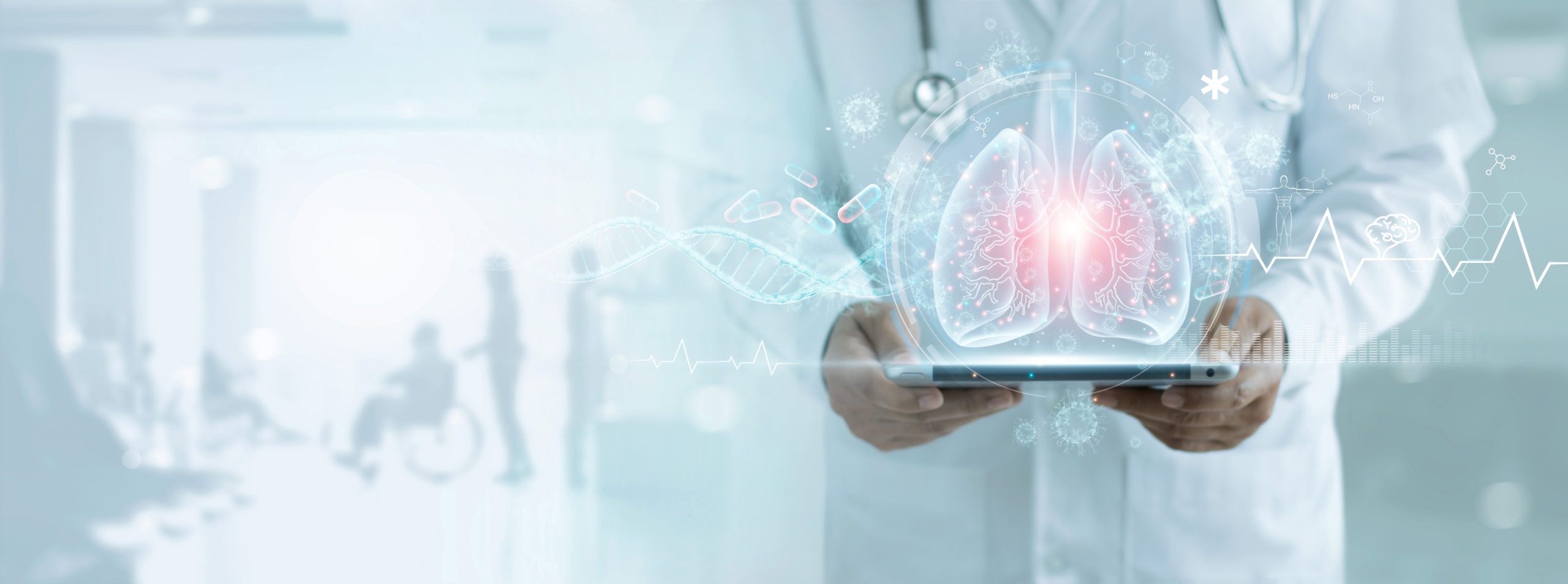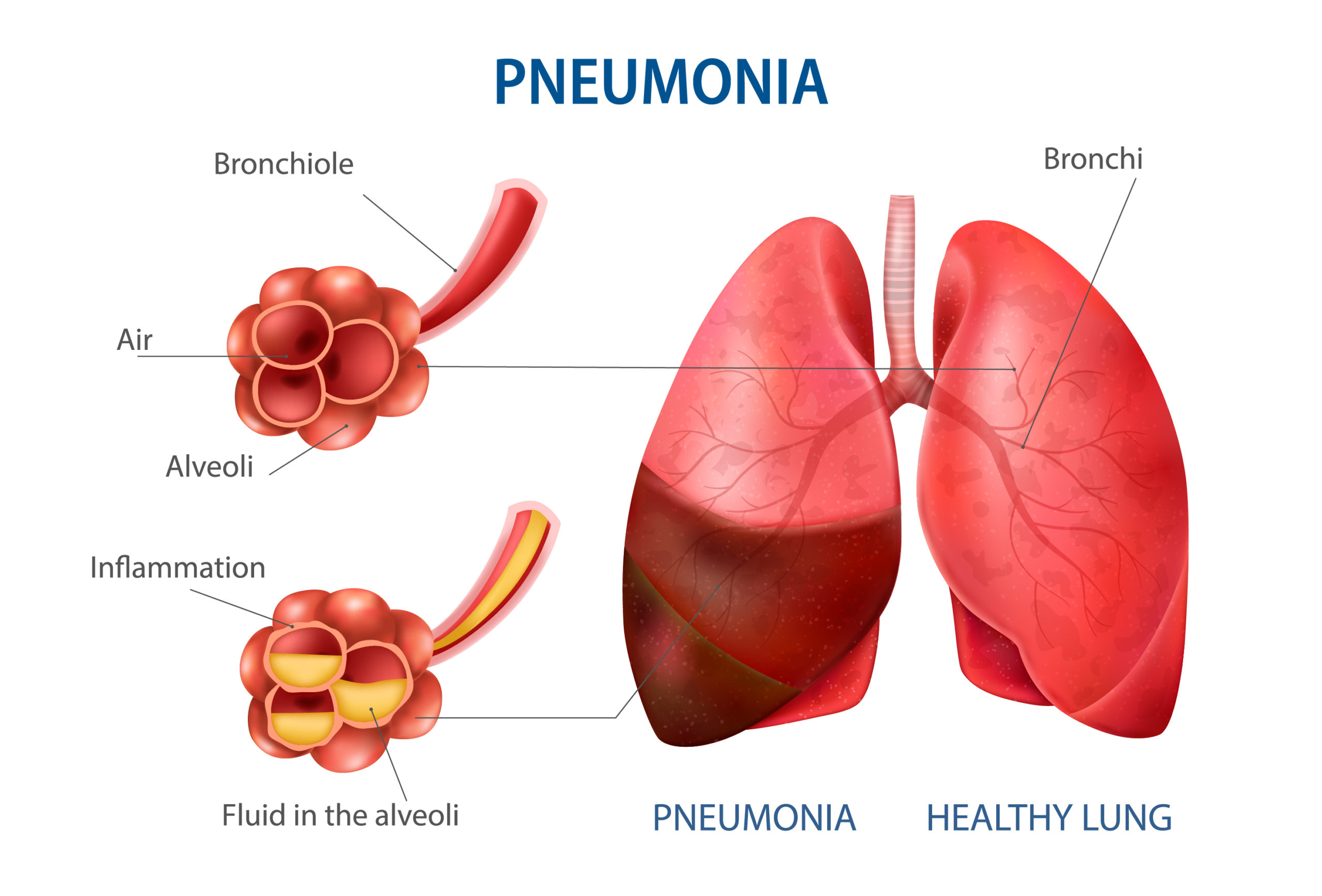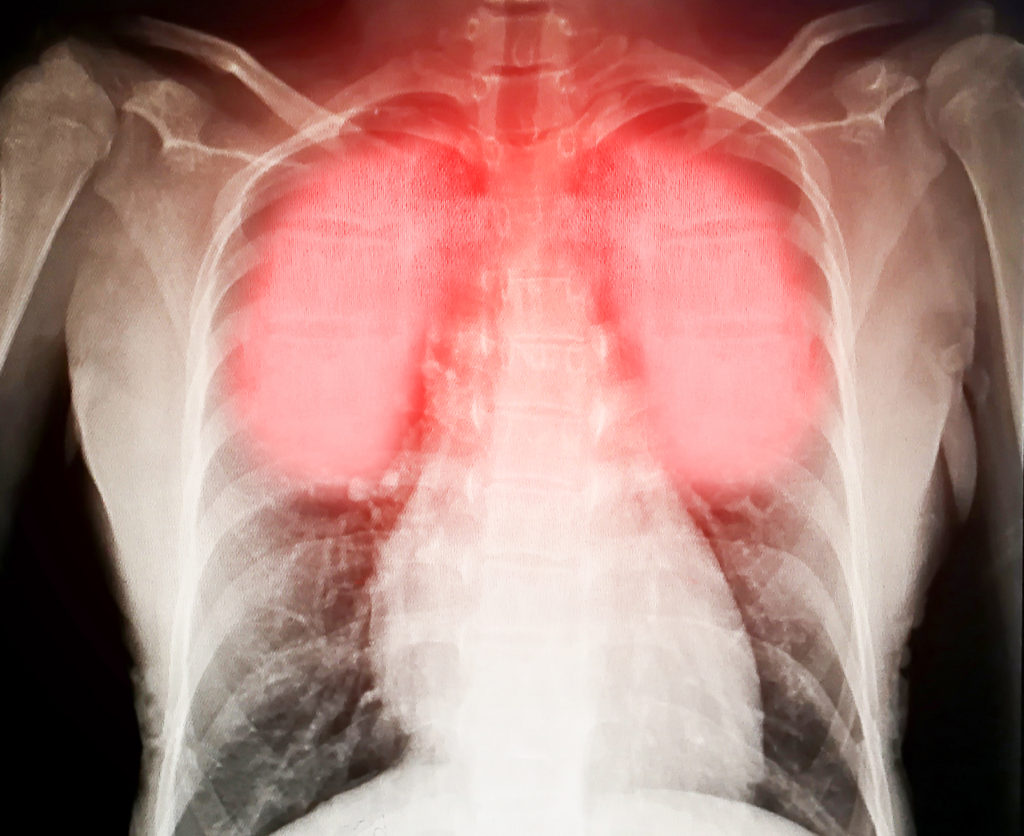| Covid-19 Blog |
While often overlooked, the association of heart and lungs with the disease is an imperative and remarkable study. These most critical organs are more closely related than the other structures present within the body. It is because they are not just mutually dependent functionally but also have an anatomical connection, separated only by the sensitive tissues of the pleura, as well as, pericardium. Therefore, not only will a change in the function of one organ affect another, but also a disease in one organ could spread (through contact) with the other.

Precisely speaking, the heart is the central organ with its protruding blood vessels, but the lungs are the organs that flank in both sides and fill the chest properly. Related by the fact, the heart is more left than right of the midline is the separation of the left lung into double lobes, whereas the right lung has three lobes. Their location and size are highly precise. Lungs comprise lobes, while the heart is an almond shape. The heart is responsible for four main functions. It pumps oxygenated blood to all parts of our body. It also functions to pump hormones in another part of the body. Additionally, it receives deoxygenated blood. The most important function is that it pumps blood to the lungs, where oxygenation takes place.
The heart pumps blood (rich in nutrients and oxygen), which is supplied to all parts of the body. It is located in the middle front of the chest and contains four champers. A pulmonary artery with its branches, main bronchi, and bronchial lymph nodes spread out to the middle mediastinum. The thoracic aorta and esophagus enter the diaphragm from the back. On the other hand, the most important structure, azygos, is a right-handed structure before entering the superior vena cava of the heart.
The Heart
The heart pumps blood (rich in nutrients and oxygen), which is supplied to all parts of the body. It is located in the middle front of the chest and contains four chambers. A pulmonary artery with its branches, main bronchi, and bronchial lymph nodes spread out to the middle mediastinum. The thoracic aorta and esophagus enter the diaphragm from the back. On the other hand, the most important structure, azygos, is a right-handed structure before entering the superior vena cava of the heart.
The Lungs
Lungs are part of the respiratory system. They aid in the process of breathing. They have strong muscles which are responsible for taking in clean air and giving out waste gases. These processes can be termed inhalation and exhalation. Inhalation means taking in clean air, while exhalation means giving out waste gases. They are also responsible for exchanging gases between the lungs and the bloodstream; and between bloodstream and body tissues.
Blood Circulation
The heart and lungs both work with each other to assure that the body has the blood with plenty of oxygen that the body wants to function appropriately. Lungs are an integral part of the blood circulation system because they supply oxygen and make the blood oxygenated. Both heart and lungs work together because the heart has a pulmonary artery that splits into two branches and transports deoxygenated blood from the heart to the lungs.
In the lungs, deoxygenated blood is converted into oxygenated blood, and the level of carbon dioxide is dropped off. Oxygenated blood is then transported from the lungs back to the heart with the help of pulmonary veins. After that, oxygenated blood is circulated in the whole body. So, lungs and heart work together in blood circulation.
The Pulmonary Circuit: The pulmonary circuit carries deoxygenated blood to the lungs from the heart (right atrium and ventricle), increases blood oxygen level, and returns oxygenated blood to the heart (left atrium and ventricle) via the pulmonary vein. The pulmonary circuit includes pulmonary arteries (right and left main), lobar branches of pulmonary arteries, intrapulmonary arteries, elastic and muscular arteries, arteries, venules, and large pulmonary veins.
The right side of the heart collects oxygen-deficient blood from the body and carries it towards the lungs for cleaning and oxygenating it. Lungs play an important role in the oxygenation of the blood. As discussed earlier, when the lungs receive blood from the heart via branches of the pulmonary artery, it lowers the level of carbon dioxide and increases the level of blood oxygen. In this way, it changes blood from a deoxygenated state to an oxygenated state.
The Systemic Circuit: When the blood is resupplied with oxygen, then the left side of the heart circulates blood all over the body so that each part gets the oxygen it demands. The heart and the lungs are the most vital organs in the body, and they work hand in hand to provide oxygenated blood to the whole-body system for the well-functioning of a body. The close relationship between the heart and the lungs indicates that breathing troubles might be the result of heart problems, lungs, or else both.

Symptoms of a heart and lung disorder might involve:
- Impenetrable shortness of breath
- Fewer oxygen amounts
- Pain in chest
- Tiredness
- Chills
- Myocardial infarction
Common dilemmas linked to the heart/lung relationship are:
- Exercise intolerance
- Weakness
- Abnormal heart rhythms
- Dyspnea
- Asthma
- Bronchitis
- The weakening of heart muscles
- Difficulty breathing
- Emphysema
- High blood pressure
- Myocardial infarction
Relation Of The Heart And The Lungs With COVID
Covid-19 affects the respiratory system severely, but recent research concludes that the virus is also responsible for the degeneration of the heart. Severe acute respiratory syndrome coronavirus 2 (Sars-CoV-2) that causes respiratory problems (for example, pneumonia or other extrapulmonary complications) is also known to affect the cardiovascular system. Since the emergence of this virus in Wuhan (A city in China), scientists have been thoroughly studying the relationship between the respiratory system and its linkage with the heart and lungs. As both the organs are in proximity, when the virus attacks the respiratory system, especially the lungs, the heart also suffers.
Coronavirus has long-term detrimental effects on the heart and lungs. Studies have revealed that it affects the heart even if the patient gets a mild coronavirus. Even after recovery, body organs, such as the heart, remain weak, the chances of heart failure become higher in corona patients (either recovered or not) than others. It causes severe heart complications, such as heart attack and heart failure in the future. So, we can say that coronavirus has a direct impact on the heart, and it can cause cardiac complications.
Coronavirus has a direct impact on the lungs, causing severe respiratory complications in patients. We know that the lungs have some small air sacs that are known as alveoli. When patients get coronavirus, it causes long-term damage to these air sacs, which seriously disrupts the respiratory system. It has many consequences, such as shortness of breath, insufficient blood cleansing, and a low level of blood oxygen. Even after recovery from COVID-19, patients find it hard to breathe normally because of the damaged air sacs.
Mutant Strain
It has been observed that patients with severe acute respiratory syndrome, later on, experience heart failure and acute coronary syndrome [1]. For example, 2 to 5 patients died of acute myocardial infarction in a study that includes 75 patients. It has also been observed that coronavirus is continuously changing due to the mutations because this disease is becoming more chronic day by day. The major protein in the coronavirus is spike protein. We know that proteins are made up of amino acid, and in the case of coronavirus, aspartate amino acid is mutated and is replaced by glycine. This causes an alteration in nucleotides resulting in the D614G mutation.
Previous researchers argued that those suffering from heart diseases in the past are more prone to getting infected by the virus. But after a series of experiments, the scientists at WHO were convinced that the mutated strains have an equal tendency to affect any gender and any age irrespective of which age group you belong. Once they get infected, different age groups respond differently to the virus. Those having a strong immune system are not affected severely, while those having any medical complications suffer more.
Similarly, the death rate of those belonging to the age group of 60 or more years was greater. The virus has the tendency to mutate, which makes it even more harmful and deadly. Various biotechnology firms are working day and night to develop a vaccine, some of them have succeeded in developing it. But due to mutation, these vaccines would be productive only to a limit. AstraZeneca and Sputnik are approved for use.
The Entry Of Coronavirus
The coronavirus enters the respiratory system, where it attaches to the mucous membrane and starts replicating. This will cause swelling and inflammation of the respiratory tract. As soon as the virus enters the bloodstream via the lungs, more severe symptoms begin to appear. After entering into the cell body, the virus releases its RNA and uses the machinery of host cells to replicate and create new RNA viruses and then assemble them. The newly synthesized virions are then released into the body [2].
There are two ways in which a virus can enter inside the host cell. Since a virus is composed of two parts, one of them is the nucleic material, and the other is the protein coat. Some viruses have the tendency to enter the host cell collectively while others shed their protein coat outside the cell, and only the virus enters into the host. The SARS-CoV-2 follows the latter mechanism. It contains S protein which is responsible for the attachment to the host cells.
Once the process of attachment is carried out and virus protein binds to the protein of the host cell, transfer of genetic material occurs. Coronavirus consists of a single strand of RNA. When it enters the host cells, it carries out the process of replication, followed by the translation. The virus produces copies of the cells and mimics the role of messenger RNA present in the host cell. It takes control of host machinery and produces an unlimited number of virus cells. These cells are responsible for the swelling of the respiratory system. Mucous membranes get infected.
Over a period of several days, when the viral cells enter the lungs, more serious complications arise. The damaged air sacs of the lungs reduce their oxygen content; therefore, patients are put on oxygen cylinders to get them oxygenated. It also affects the brain because the proper amount of oxygen is not going towards it, as a result of which, some parts of the brain stop functioning. Dizziness and anxiety also appear in patients suffering from the low level of oxygen in their blood and lungs. This low level is because the virus attacks the alveoli, which do not bind with the oxygen because they are damaged.
Mutations
Mutations are normal behavior for viruses, while some viruses mutate more as compared to the other. That is why it is recommended to get a new vaccine every year. Multiple variants of SARS-CoV-2 are detected as the coronavirus is an RNA virus and it mutates. Since the virus synthesizes its near variants after entering into the host and social contact is the primary source of the spread of this virus, that is why it will continue to change [3].
Effects On The Lungs And The Heart
When the SARS-CoV-2 causes inflammation of alveolar cells, the immune cells will reach that site and crowd that swollen site [4]. The heart pumps blood throughout the body, but before entering into the entire body, blood goes into the lungs to ensure that RBCs are surpassed with a sufficient quantity of essential oxygen.
If the lungs get infected, they cause the heart to malfunction, causing serious respiratory and cardiac complications. When the level of oxygen gets low, the heart also swells or increases in size. The heart muscles are tired because they are not receiving proper oxygen and their continuous pumping inflames them. A damaged or diseased heart can impair breathing. Abnormalities due to lungs and respiratory system complications are infections, allergies, asthma, and bronchitis can all lead to flowing major problems:
Heart Failure: The heart’s ability to function properly can be affected by weakness in its muscles until it becomes unable to circulate blood throughout the body effectively. The blood inclines back to the body as well as fluids pass into the tissues, leading to swelling. This leads to the failure of the heart, commonly called congestive cardiac failure. Initial symptoms are breathlessness while exercising. Later on, tiredness, weakness, and shortness of breath are reported.
Pulmonary Oedema: Fluid on the lungs is called pulmonary edema. The ability of the lungs to oxygenate blood is affected when liquid assembles in the air spaces. It can be a terrifying and unpleasant situation leaving the patient breathless. This type of disorder can be caused by lung disorders. However, when heart failure is very serious, the blood pressure in the lungs occurs that pushes fluid into the air sacs.
This is how heart failure causes respiratory failure. Patients with pulmonary edema will experience symptoms of breathlessness, cough-up pink, weakness, and uneasiness. The shortness of breath can be even worse at night when lying down horizontally because fluids in the lungs can make the patient feel like drowning. If you are suffering from any of these symptoms, it is important to have an emergency medical assistant.
Heart Attack: The blockage of the main arteries that carry blood to the heart results in a heart attack. This is due to the starvation of muscles of the oxygen which is needed for their survival. The symptoms include pain and shortness of breath. If a rapid treatment is not provided, part of the heart muscles can expire. This makes the heart to be less operative in blood pumping and raises the risks of breathlessness and failure of the heart.
Heart Rate Irregularities: The regular pattern of heartbeat is controlled by the electrical circuit of the body. Various heart problems, short-circuits, heart attacks, alcohol, and caffeine can all result in this process, causing irregular and rapid beats. A fast heartbeat, more than 100 beats/minutes, is called tachycardia. A fast heart rate can cause difficulty in pumping blood effectively, leading to breathlessness and often cause fainting and collapse.
Cytokine storm: Cytokine storm can also be attributed to this malfunction. A stage reaches when the immune system starts attacking the healthy cells of the body, causing further inflammation. It can damage some organs such as kidneys, liver, and heart [6]. The resulting heart damage due to this storm can affect the heart’s rhythm, and serious ventricular arrhythmias can be devastating. In this situation, it is difficult to survive.
Studies have shown that when persons recovered from Covid-19 were examined, and their ECGs were conducted to study the pattern of their heart. It was quite a surprise for the doctors and researchers when they saw clear abnormalities in patients. They concluded that those who have suffered from corona and are healthy now are still more prone to great a stroke as compared to those who have not been affected by the virus.
In another study, researchers inspected and compared 100 patient’s hearts. Some of them had COVID-19 history; others were kept under control and were never infected with the coronavirus. A test named heart MRI which examines the structure and functions of the cardiac system was performed on each patient. The results showed that 78% of cases were the patients who previously had the virus, showed difference or damage to their hearts along with impairment and inflammation [5]. The results of the study also showed that some patients were reported with impaired heart, were comparatively well, young, and had no history of primary risk factors.
The study of the virus is still in its preliminary stages. After receiving proper data, researchers can come to a proper conclusion; till then, everything is based on predictions. But one thing is sure; the heart cannot function properly if the lungs are not working, and heart complications may be present who did not have pre-existing illnesses or did not suffer from a severe case of COVID-19. Some recent evidence also points out that there are chances that the CPVID-19 virus may directly invade the cardiovascular portion of our body and kill the cells.
Bottomline
The mutations and their lethal effects are strongly associated with human behavior because the greater the rate of increase in infection among the people, the greater are the chances of mutation in the virus. Hence, it is recommended by the World Health Organization to follow standard operating procedures such as wearing masks, practicing social distancing, and good hygiene will give the virus fewer chances to undergo mutations. If the variant strains are present in the population, following the SOPs will decrease the spread rate of these variants.
Since both heart and lungs are responsible for proper and efficient working of the body and are also critical for smooth oxygen transport, therefore, both of them are of cardinal importance to the wellbeing of the human body.
References:
- Peiris JS, Chu CM, Cheng VC, Chan KS, Hung IF, Poon LL, Law KI, Tang BS, Hon TY, Chan CS, Chan KH. Clinical progression and viral load in a community outbreak of coronavirus-associated SARS pneumonia: a prospective study. The Lancet. 2003 May 24;361(9371):1767-72.
- Koester V. Coronavirus entering and replicating in a host cell. ChemViews. 2020;5:e1000428.
- Kopf J, Lischinski D, Deussen O, Cohen‐Or D, Cohen M. Locally adapted projections to reduce panorama distortions. computer Graphics Forum 2009 Jun (Vol. 28, No. 4, pp. 1083-1089). Oxford, UK: Blackwell Publishing Ltd.
- Mahase E. Covid-19: What new variants are emerging and how are they being investigated.2021.
- Hayden, M. (2020). Viremia and Interaction of Endothelial Cells, Erythrocytes, Leukocytes and Platelets in Type 2 Diabetes Mellitus and COVID-19: A Closer Look at Proposed Mechanisms.
- Fajgenbaum, D. C., & June, C. H. (2020). Cytokine storm. New England Journal of Medicine, 383(23), 2255-2273.






